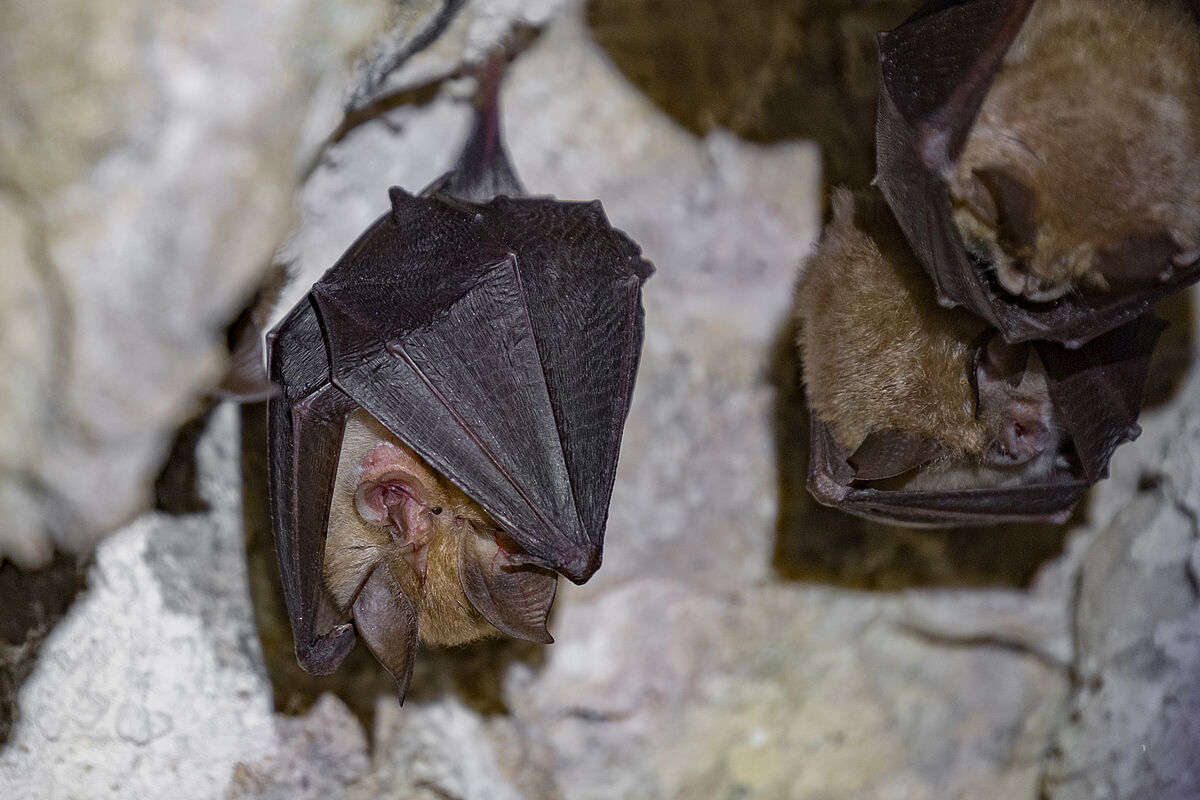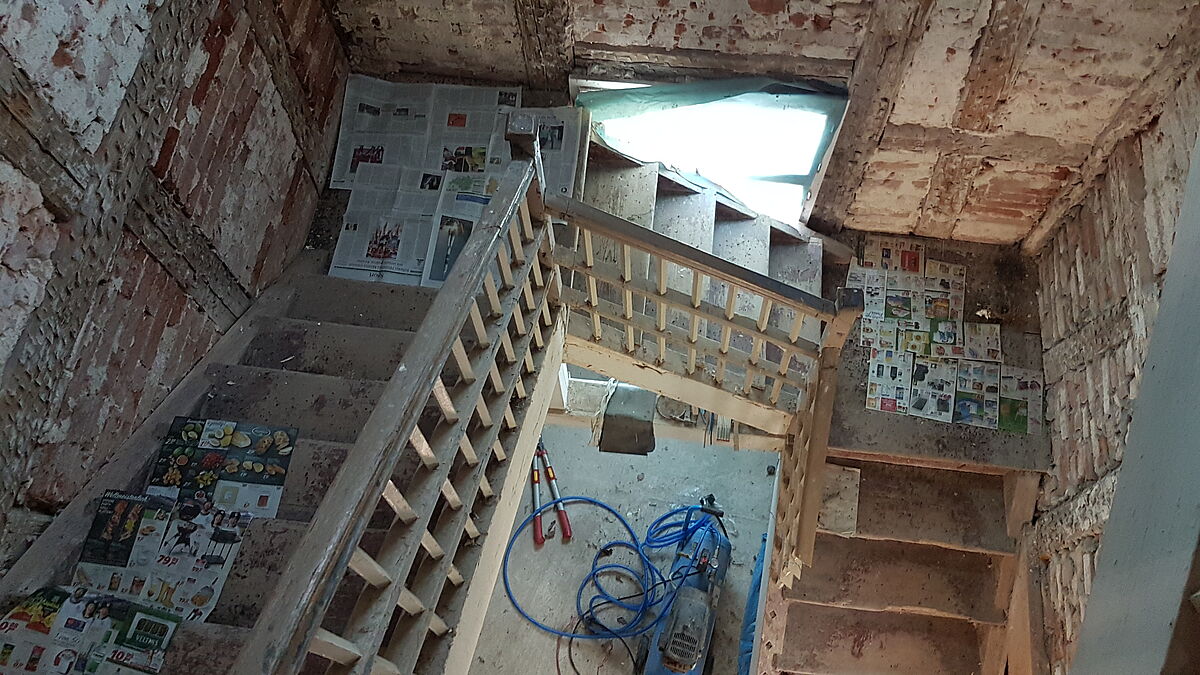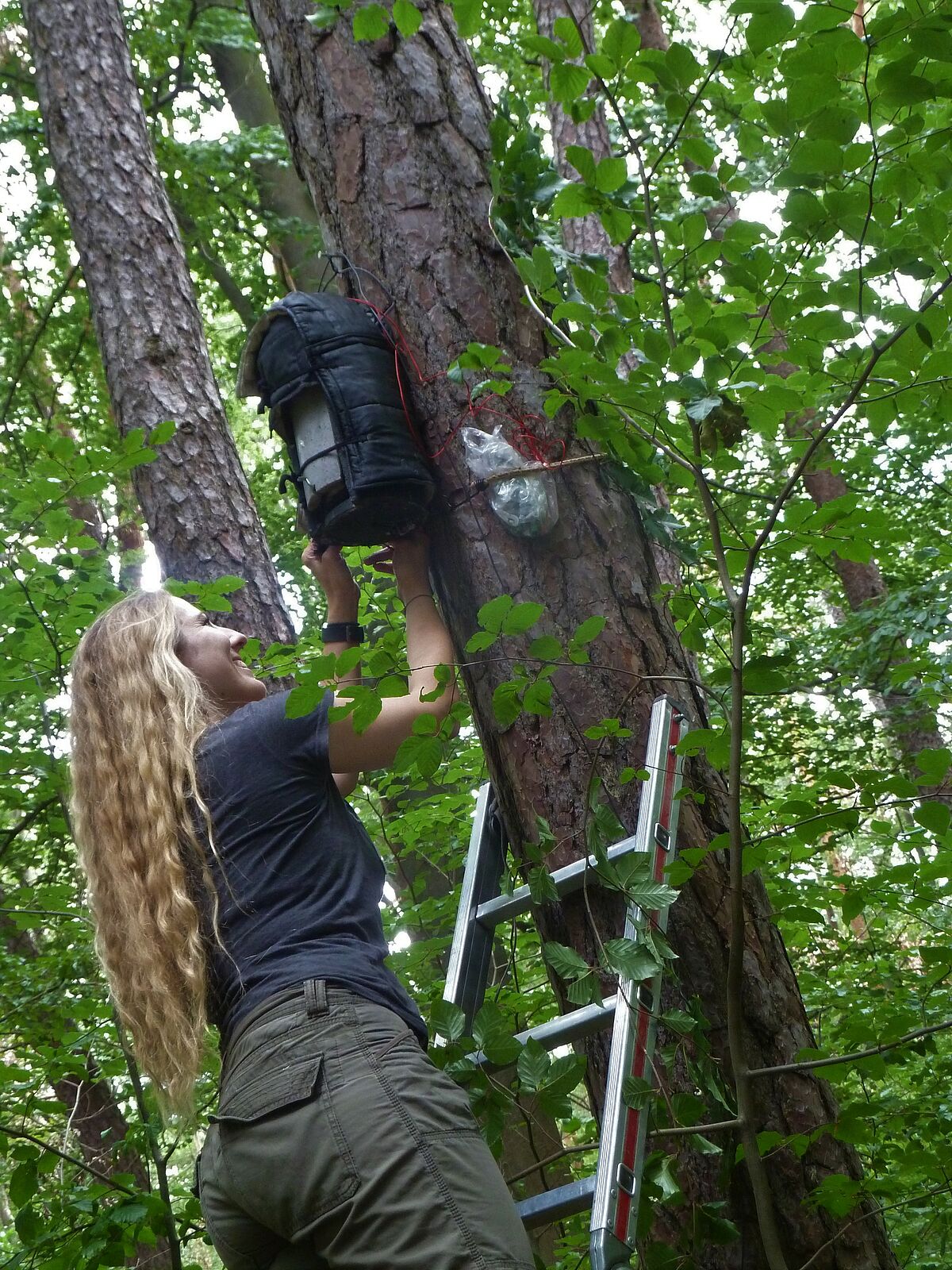RESPONSEs to changing environments
Funded by the DFG Research Training Group 2010 "Biological RESPONSEs to Novel and Changing Environments".
The ability to respond to novel and changing environmental conditions, either by phenotypic plasticity, genetic adaptation, or range shifts, is pivotal to the longer-term survival of all organisms. Owing to increasing concerns about the consequences of human-induced global change, such responses have attracted intense interest in recent years. Our projects focus on different aspects of possible plastic and genetic responses in several long-lived bat species:
1) Using long-term monitoring data of free-ranging, individually marked populations of three bat species of the genus Myotis we analyse plastic and genetic capacities for in situ responses. In collaboration with Dr. Jutta Gampe from the Max Planck Institute for Demographic Research, we quantify the influence of weather conditions on the behaviour, morphology, reproductive success and survival of Myotis bechsteinii, M. daubentonii and M. nattereri (Reusch et al. 2019). The existing field and genetic data are combined with new experimental data, where we perform different temperature-related field experiments to test for the impact of roosting temperatures on the body size of juvenile bats. In a further step, we assess the heritability of the fitness-relevant trait body size (Fleischer et al. 2017), to deepen our understanding of the limits to population persistence. Our ultimate goal is to enable more accurate predictions regarding the fate of bat populations under changing environmental conditions.
2) Furthermore, we study plastic and genetic capacities limiting or facilitating dispersal to new habitats in the lesser horseshoe bat, Rhinolophus hipposideros. This species is currently undergoing a northward range expansion in Central Europe (Jan et al. 2019). Here we are especially interested in colony formation and the heritability of dispersal on the range expanding edge in Thuringia (GER). We work with local partners Martin Biedermann, Wolfgang Sauerbier and Wigbert Schorcht, as well as with international collaborators Eric Petit, INRAE Rennes (FRA) and associated researcher Sébastien Puechmaille, University of Montpellier (FRA). We track colonies and individuals through time and space using a combination of genetic, acoustic, demographic, and environmental measurements. Specifically, we use a non-invasive capture-mark-recapture approach, based on nuclear molecular markers derived from faecal samples to track individuals (Zarzoso-Lacoste et al. 2018). This approach also allows us to gather insight into the population genetics of expanding Rhinolophus hipposideros populations(Jan et al. 2019). Additionally, we use long-term demographic data, acoustic monitoring (Lehnen et al. 2018), and loggers to gather temperature and humidity data to get further insight in colony growth, dispersal and their responses to a changing environment.



